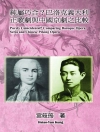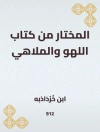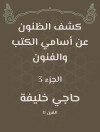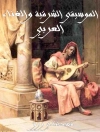In 1921, Sergei Prokofiev’s Love for Three Oranges —one of the earliest, most famous examples of modernist opera—premiered in Chicago. Prokofiev’s source was a 1913 theatrical divertissement by Vsevolod Meyerhold, who, in turn, took inspiration from Carlo Gozzi’s 1761 commedia dell’arte – infused theatrical fairy tale. Only by examining these whimsical, provocative works together can we understand the full significance of their intertwined lineage.
With contributions from 17 distinguished scholars in theater, art history, Italian, Slavic studies, and musicology, Three Loves for Three Oranges: Gozzi, Meyerhold, Prokofiev illuminates the historical development of Modernism in the arts, the ways in which commedia dell’arte’s self-referential and improvisatory elements have inspired theater and music innovations, and how polemical playfulness informs creation.
A resource for scholars and theater lovers alike, this collection of essays, paired with new translations of Love for Three Oranges, charts the transformations and transpositions that this fantastical tale underwent to provoke theatrical revolutions that still reverberate today.
Tabela de Conteúdo
Editorial Notes
List of Definitions and Abbreviations
List of Illustrations
List of Musical Examples
Preface: How Not to Die Laughing in a Lethal Time, by Caryl Emerson
Acknowledgments
Introduction, by Dassia N. Posner, Kevin Bartig, and Maria De Simone
Part I: The Fiaba
1. Reflective Analysis of the Fairy Tale The Love of Three Oranges, by Carlo Gozzi , by Maria De Simone
2. The Love of Three Oranges, Venice 1761: A Theatrical Provocation, by Alberto Beniscelli
3. A Short Note on the First Sacchi Company , by Giulietta Bazoli
4. Gozzi’s The Love of Three Oranges: A New Horizon of Expectations, by Domenico Pietropaolo
5. Carlo Gozzi’s Reactionary Imagination, by Ted Emery
6. A Cultural Pastiche of Fantasy, Satire, and Citrus: Gozzi’s The Love of Three Oranges in its German Afterlife, by Natalya Baldyga
Part II: The Divertissement
7. Love for Three Oranges. A Divertissement in Twelve Scenes, a Prologue, an Epilogue, and Three Interludes, by Konstantin Vogak, Vsevolod Meyerhold, and Vladimir Soloviev, by Dassia N. Posner
8. Carlo Gozzi in The Journal of Doctor Dapertutto , by Raissa Raskina
9. Meyerhold and the Russian Commedia dell’Arte Myth , by Vadim Shcherbakov
10. The Miklashevsky Connection, by Laurence Senelick
11. From Divertissement to Opera: Two Russian Oranges, by Julia Galanina
Part III: The Opera
12. Love for Three Oranges, by Sergei Prokofiev , by Kevin Bartig
13. Tsardom and Buttocks: From Empress Anna to Prokofiev’s Fata Morgana, by Inna Naroditskaya
14. Notes on the Musical Parody in Prokofiev’s Three Oranges , by Natalia Savkina
15. Notes on the Notes , by Simon A. Morrison
16. Boris Anisfeld, an Alchemist of Color , by John E. Bowlt
17. Oranges in Leningrad , by Kevin Bartig
List of Contributors
Index
Sobre o autor
Dassia N. Posner is Associate Professor of Theatre and Slavic Languages and Literatures at Northwestern University. Her books include The Director’s Prism: E. T. A. Hoffmann and the Russian Theatrical Avant-Garde and The Routledge Companion to Puppetry and Material Performance.Kevin Bartig is Professor of Musicology at Michigan State University. His books include Composing for the Red Screen: Prokofiev and Soviet Film and Sergei Prokofiev’s Alexander Nevsky.Maria De Simone is a Ph D candidate in the Interdisciplinary Ph D in Theatre and Drama (IPTD) program at Northwestern University. Maria also holds an MA from Ca’ Foscari University of Venice, where she was first introduced to 18th-century Venetian theatrical practices.












